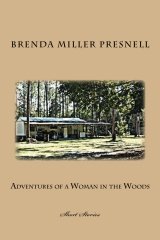Hunting Articles
Outta' the Woods
August, 2014

Hunting articles by Tony Young, the media relations coordinator for the Florida Wildlife Commissionâs Division of Hunting and Game Management. You can reach him with questions about hunting at 850- 488-7867; or Tony.Young@MyFWC.com.
Expect Changes for Hunting Zones A and D This Fall
By: Tony Young
If you hunt in Zone D, there are several major changes this year to fall hunting regulations that you need to know about. And, if your hunting spot was in the northern portion of Zone A, you might be hunting in Zone C now.
If you hunt in southern Manatee County, Sarasota County, southwest DeSoto County, west Charlotte County, southeast Okeechobee County, south St. Lucie County, Martin County or north Palm Beach County, you now have later fall hunting season dates than what youâre used to, because the boundary line between the two zones has been adjusted.The boundary line used to be State Road 70, but hunters had noted, and recent biological surveys have confirmed, that deer living in the above-mentioned areas have a breeding period that occurs later than that of most of the deer in Zone A. These deer actually have a breeding period more in line with deer living in Zone C.
It is because of this that a number of local hunters asked the Florida Fish and Wildlife Conservation Commission (FWC) to move the boundary line between hunting zones A and C, so that all or parts of these counties would instead be included in Zone C, which has the later hunting season dates that better align with when the rut occurs in these areas.
The new boundary line between hunting zones A and C begins at the Gulf of Mexico and runs northeast through Charlotte Harbor and up the Peace River until it intersects with S.R. 70. The line then follows S.R. 70, running east until it meets U.S. 441 north of Lake Okeechobee. It then follows U.S. 441 south, where it proceeds around the eastern shore of Lake Okeechobee. The line then turns off U.S. 441 and onto S.R. 80 and runs just a few miles before turning east and following County Road 880, running just a few miles before joining back up with U.S. 98/441/S.R. 80/Southern Boulevard until it reaches the Atlantic Ocean.
This new line separating hunting zones A and C affects only the fall hunting seasons. Spring turkey season dates remain unaffected and will continue as they have been. In other words, spring turkey season south of S.R. 70 will continue to open the first Saturday in March, while north of S.R. 70 in the rest of the state, the season will continue to open the third Saturday of March. The daily bag limit for turkeys during the spring and fall hunting seasons has been increased to two on private lands. However, you may still take only one turkey per day on wildlife management areas, and in Holmes County, the daily and season limits remain one turkey during the spring, with no fall season. In the rest of the state, the fall and spring season bag limits have not changed and are still two.
If you hunt in the Panhandle in Zone D, that zone has now been divided into two deer management units(DMUs), each with its own unique set of antler regulations and antlerless deer harvest days.This new change is part of a larger, statewide project aimed at managing deer on a more local level and providing hunters, landowners and other stakeholders a greater say in deer management.
The FWC conducted a public outreach and input process in northwest Florida during the first quarter of 2013. During that period, the Commission received input and comments from hunters, farmers and the general public regarding how they would like to see deer managed in the newly proposed DMUs. A technical assistance group made up of deer enthusiasts was then formed, and this team developed goals and objectives for the two DMUs.
As a result of this outreach process and ideas provided by the group, the FWC passed rules for both public and private lands in both of the newly created DMUs in Zone D, with Interstate 10 being the dividing line between the two DMUs. North of I-10 is DMU-D2, and south of I-10 is DMU-D1.
The new regulations require that bucks harvested north of I-10 in DMU-D2 must have antlers with at least 3 points (each point having to be at least 1 inch long) on one side OR have an antler with a main beam length of at least 10 inches.
South of I-10 in DMU-D1, the minimum antler requirement is now two points (each point having to be at least 1 inch long) on one side. The antler regulations in each DMU are intended to protect most 1.5-year-old bucks from being shot, while allowing the harvest of most 2.5-year-old and older bucks. Since antler development is different within the units, different antler regulations were needed to accomplish this goal.
However, youth (15 years old and younger) are exempt from these new antler requirements in both DMUs, and they may continue to harvest bucks that have an antler that is at least 5 inches long. This was important to hunters who indicated they wanted to encourage youth to hunt. These new antler regulations and youth exemption apply to both private lands and wildlife management areas within Zone D.
There are also changes to the antlerless deer season (âdoe daysâ) on private lands within Zone D.
In DMU-D2 (north of I-10), antlerless deer season is now eight days distributed across four weekends. These weekends are the Saturday-Sunday after Thanksgiving, the first weekend of muzzleloading gun season, the third weekend of general gun season and the weekend after Christmas.
In DMU-D1 (south of I-10), the antlerless season is now four days consisting of two popular holiday weekends â the weekend after Thanksgiving and the one after Christmas.
The purpose of modifying the antlerless deer season is to spread out the hunting opportunity, so that more hunters could participate without reducing deer populations. There are differences in the current deer density between the two DMUs, and that is why there are fewer days to take antlerless deer south of I-10. These changes will be monitored to measure any impacts they may have on the deer harvest and hunter satisfaction within each DMU.
The FWCâs Deer Management Program has been working with the public in zones A, B and C to get preferences for DMUs within these hunting zones. Be on the lookout for proposals as a result, and you may keep up with any proposed changes at MyFWC.com/Deer.What's New
-
Hunting Articles by Tony Young, Outta the Woods, August 2016
Aug 01, 16 06:02 PM
-
2016 Upcoming Gun Shows
Jul 23, 16 11:33 AM
-
2016-2017 WMA Brochures & Maps
Jul 22, 16 03:36 PM
Great Reading!

"Adventures of a Woman in the Woods"
[Short Stories]



Children's Book
ages 9-14
Paperback Edition
Kindle Edition

Submit YOUR photo!

Florida FWC 2016-2017
Hunting Regulations Handbook
Hunting License and
Permits Information
|
What others are saying about our site:
|

